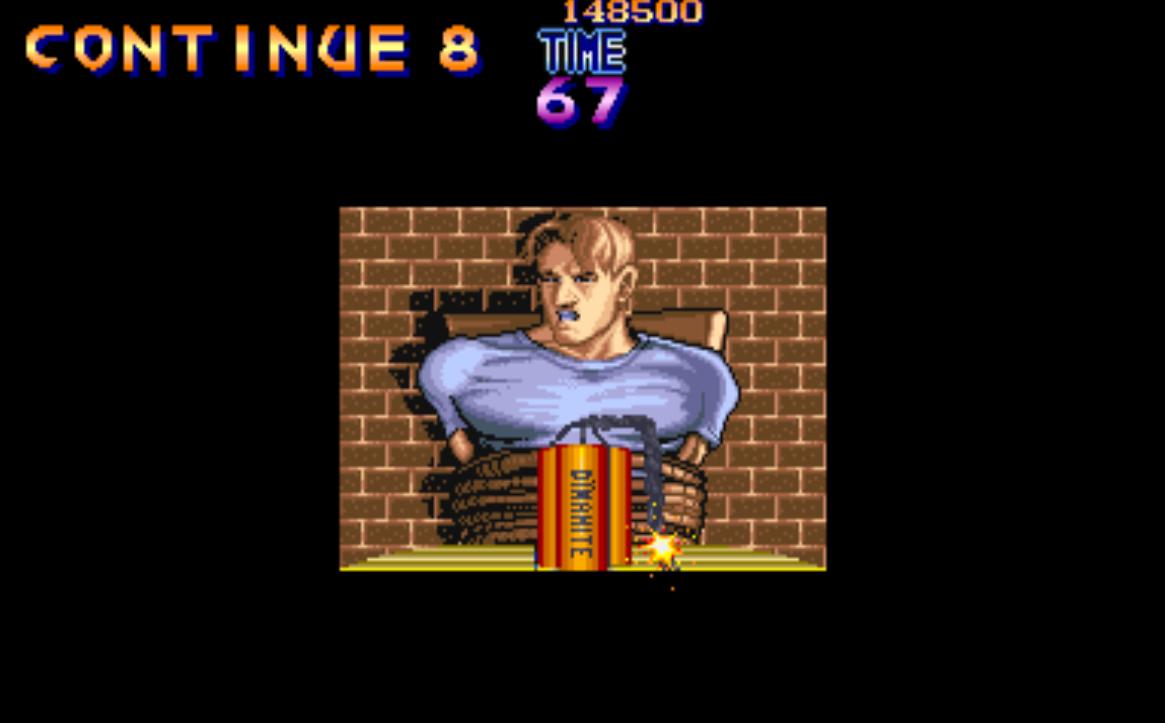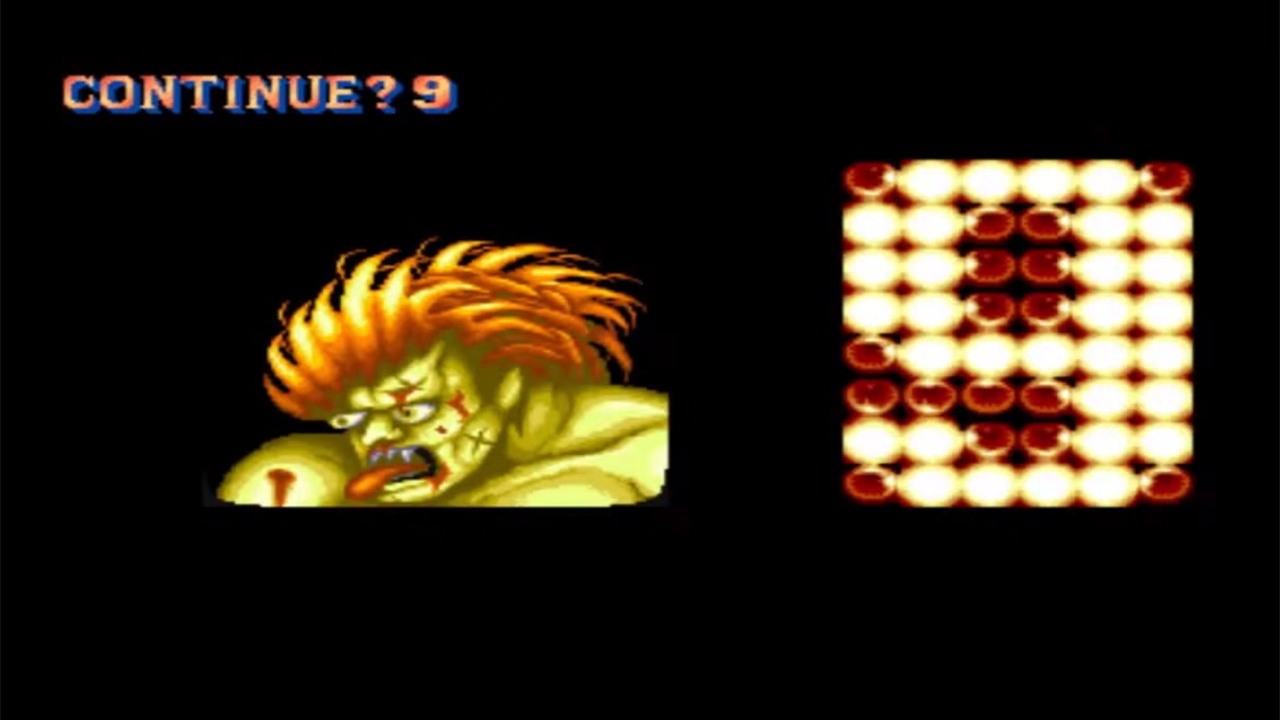The Origins of the Video Game Continue Screen
A 10-second count down to carry on playing? It began in arcades, but still persists today. We look at the origins of the continue screen...
“Insert coins to continue” – it’s a phrase so common in gaming that it’s often seen emblazoned across t-shirts or used as an introduction to articles like this. It’s a string of words that stirs up echoes from medium’s early history, when some of the most popular games appeared in dingy buildings called arcades.
Taking their cue from the pinball machines and other mechanical amusements of the past, arcade games exchanged the promise of a few minutes’ excitement for a coin or two.
Then, as the 1980s wound on, arcade machines began to offer a new option to players after the dreaded Game Over screen appeared: if they put inserted another coin, they could carry on from where they left off. Appearing in the middle of the decade, the continue screen became almost ubiquitous by its end, and it still features – albeit in modified form – in games today.
Sometimes regarded as a symptom of a dying industry, as the supremacy of the amusement arcade was gradually usurped by the home console, the continue screen’s life didn’t begin near the end of the 80s, but at the beginning – when arcade attendance was still at its height.
The late 1970s and early 1980s ushered in what’s now regarded as the golden age of the arcade – a period where players eagerly headed to dark, often rather smoky buildings to play the latest games by such companies as Atari, Taito and Williams.
Starting with Space Invaders in 1978, the era was marked out by a particular type of game: one which could be easily understood yet provided a stern challenge. The introduction of innovations like the highscore table encouraged competition among players, and soon, a lively culture had built up in arcades. Games like Pac-Man and Donkey Kong became a significant part of ’80s pop culture, and for several years, the arcade industry’s profits soared.

While all this was going on, a company called Shin Nihon Kikaku – better known by its shorter title, SNK – put out a game called Fantasy. Leaping to much greater attention with the Neo Geo console and games like Metal Slug and King Of Fighters in the 1990s, SNK was relatively unknown in the west at the start of the previous decade.
Viewed today, Fantasy‘s an unremarkable – if slightly eccentric – action game. It sees you take control of a plucky hero in a blue hat, whose goal is to rescue his girlfriend Cheri from a pirate and, subsequently, a selection of other weird villains.
Taking place over a series of varied stages, Fantasy features flying sections where you ride in a hot air balloon as gorillas throw coconuts at you from below, and Donkey Kong–like segments where you run along platforms and avoid deadly squirrels. (Like we said, it’s an eccentric game.)
Although far from a classic, Fantasy reached European arcades in 1981 – shortly after its appearance in Japan – and launched in America the following year courtesy of the Rock-Ola Manufacturing Corporation. But this unassuming game had one key innovation: lose all your lives, and a few lines of text would appear on the screen.
“To extend play,” the blurb went, “insert coin and press start button within 10 seconds. If credit remains, press start once again.”
It wasn’t exactly succinct, but the classic phrase “Insert coins to continue” has its origin here.
Perhaps unsurprisingly, other companies weren’t particularly quick to copy SNK’s idea. But towards the middle of the 1980s, attendances at arcades began to dwindle. The resurgence of consoles, spearheaded by the Nintendo Entertainment System, led to a gradual decline in arcade profits as players began to play games in the comfort of their own homes. An industry that had been valued at $7bn in 1982 had dropped to $4bn in 1986.
During the decline, Atari released Gauntlet in 1985 – an action dungeon crawler which, despite the general slow-down arcade owners were experiencing at the time, was a huge hit. Designed by Ed Logg, Gauntlet was greatly influenced by an earlier fantasy game, Dandy – something Logg openly admitted – yet its four-player multiplayer mode was unlike anything that had appeared in arcades before.
Gauntlet also allowed players to continue from where they left off by inserting more coins. In their book Rules Of Play, Katie Salen and Eric Zimmerman argue that this approach was entirely different from most other arcade games which came before it – where earlier games, like Space Invaders or Pac-Man, were about players challenging themselves to better their score or get a little further on a single credit, Gauntlet allowed them to simply carry on for as long as they were willing to keep spending money.
“This can turn Gauntlet into a completely different kind of conflict,” the authors continue, “one in which players compete to demonstrate their tolerance for putting money into the game, a form of conspicuous consumption much like high stakes gambling.”

Nevertheless, Gauntlet was a hit both with players and arcade owners alike. And within a single year, the option to continue proliferated among other games – Bubble Bobble, a popular platform game released in 1986, let customers continuously add coins to carry on playing. The fighting game Double Dragon, released the following year, was one of the biggest arcade hits of the late 80s, ushering in a wave of similar bruising games, each with their own variation on the continue screen.
The continue screen quickly became so common that developers began adding their own twists to their design. Instead of presenting the player with a black screen, they added dramatic scenarios which, when combined with the tension of a clock ticking down from 10 to one, were designed to have players clamouring to find another coin; Capcom’s Final Fight, for example, saw its hero Mike Haggar tied up and frantically trying to blow out a stick of fizzing dynamite.
Regarded by some as an increasing sign of greed on the part of game designers, continue screens are often remembered with a certain amount of nostalgia today. Indeed, they still feature, albeit without the hectoring countdown, in many current console games. They’re an affectionate nod, perhaps, to the bygone age of the arcade.